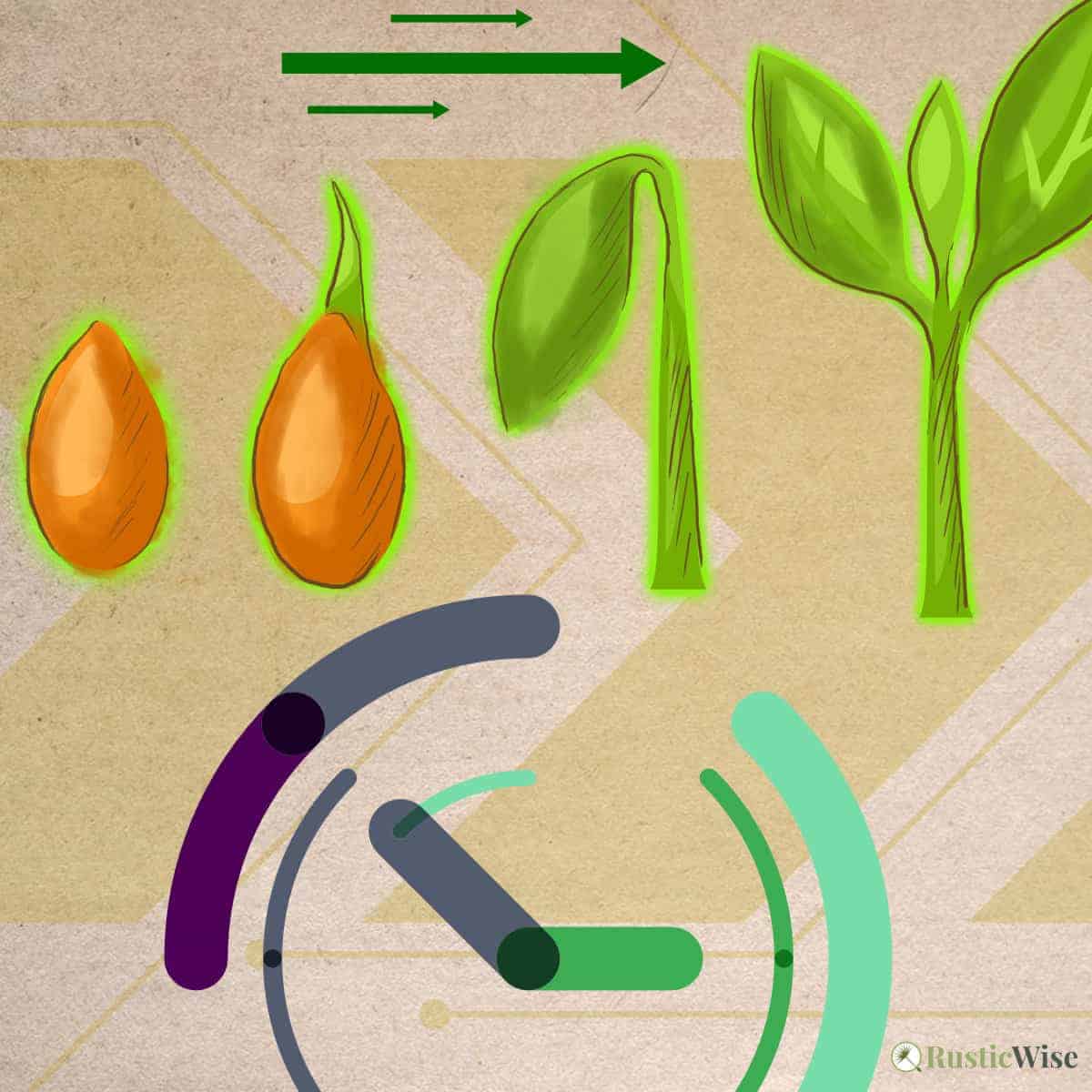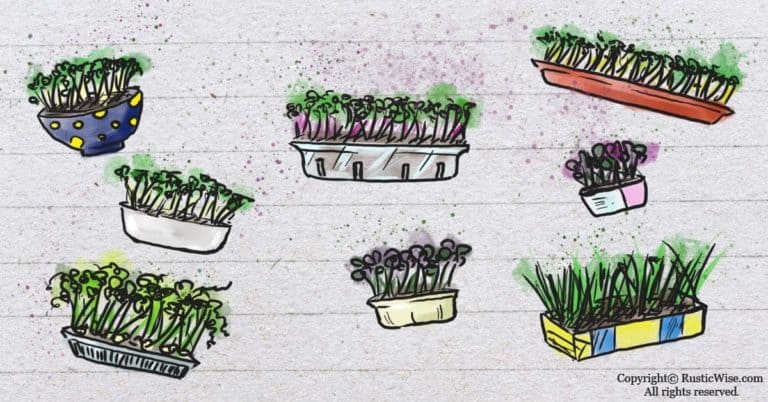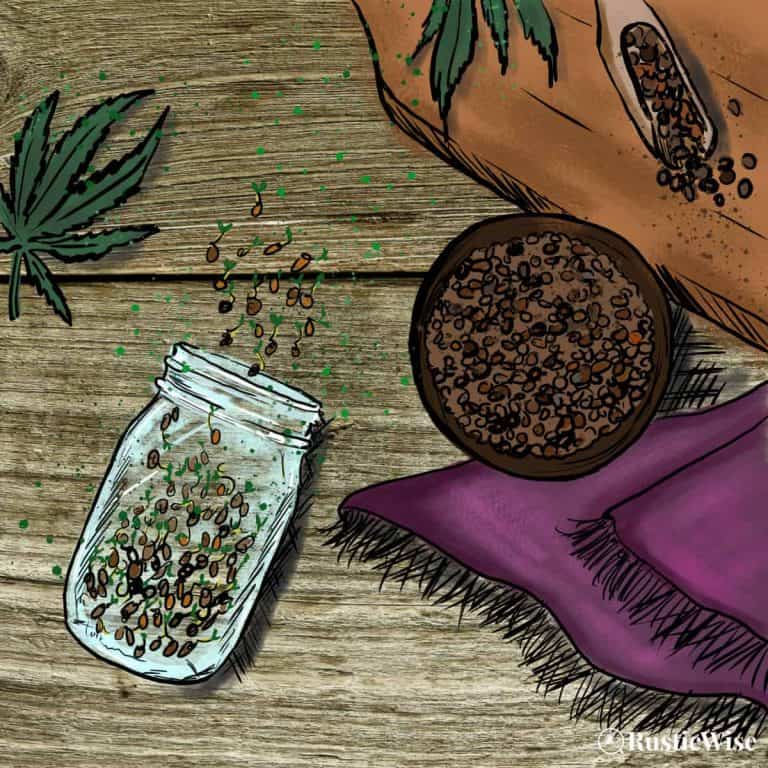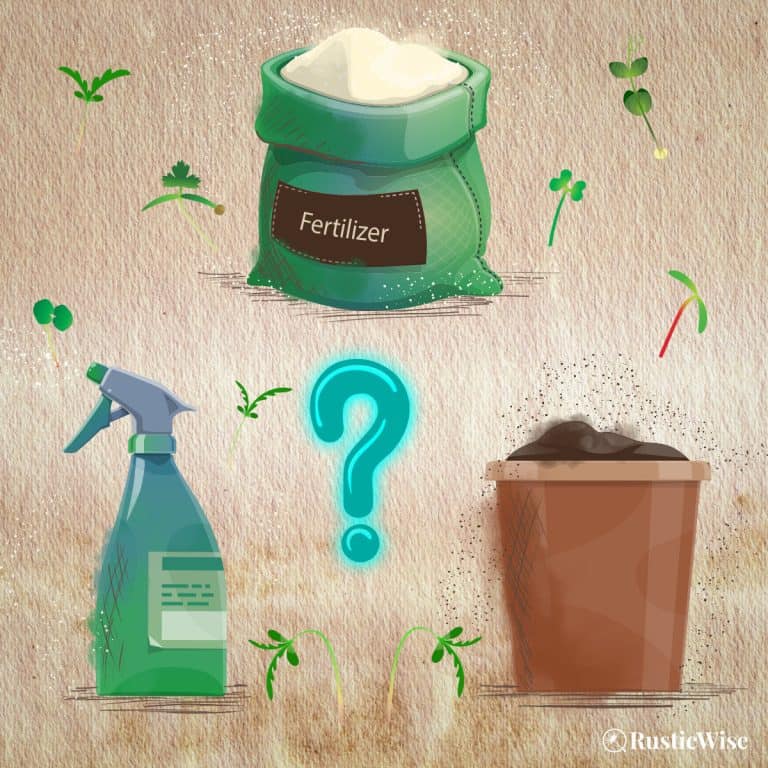12 Fastest Growing Microgreens
Microgreens are a fast-growing crop. But there are some micros that stand out in the crowd for their particularly rapid growth.
Here’s a roundup of 12 fastest growing microgreens that are ready to harvest between 5 and 14 days. Try growing arugula, broccoli, cabbage, corn, cress, kale, kohlrabi, mustard greens, pea, radish, sunflower, and wheatgrass if you’re in a hurry. There’s nothing quicker for home gardeners (besides sprouts, that is) for a swift growing process that gives you garden-fresh produce in under two weeks.
Let’s take a closer look at each of these quick growing micros.
What are microgreens?
Microgreens are tiny greens that haven’t yet grown into full plants. You can germinate a variety of vegetable, legume, herb, and grain seeds. Often cultivated in soil (or a soilless media), micros are harvested above the soil level when they are between 1 and 3 inches tall (roughly 3 to 8 centimeters).
Microgreens contain the seed leaves, also known as cotyledons; these are loaded with nutrients.
Researchers have found that after evaluating 25 types of commercially available microgreen seeds, these tiny plants contain between 4 and 40 times the amount of vitamins and carotenoids than the same leaves from fully grown plants. On average, many micros have five times more vitamins and carotenoids than their mature plant counterparts.¹
The seed leaves are the first two pairs of leaves that appear after germination. Some people prefer to wait until the first true leaf appears, which is the second set of leaves.
Are microgreens the same as sprouts?
No, micros and sprouts are different. While microgreens are grown in soil or hydroponically, sprouts do NOT require any type of soil or growing substrate. Many home growers use a simple mason jar or sprouter to grow sprouts.
Another key difference is that sprouts don’t require any sunlight to grow.
Sprouts are also eaten in their entirety, whereas microgreens are trimmed above soil level, leaving the roots behind.
Not all fast-growing micros are easy to grow
It may seem strange to say that some microgreens are easier to grow than others, but here’s the thing: it’s true.
Radish microgreens are one of the fastest and easiest to germinate and develop quickly. Ditto for broccoli.
Others may require a few extra steps. For example, some microgreens seeds like sunflower microgreens grow best if soaked and pre-sprouted first.
So just because something grows fast, doesn’t mean they’re necessarily easy to grow.
If you’d like to check out the easiest microgreens to grow, we’ve compiled a list of that, too.
Proper growing conditions are key
Let’s not forget to mention that without proper growing conditions, your tiny greens won’t grow quickly (or at all!).
If you plant microgreens, you can enjoy growing your own fresh vegetables and herbs. Microgreens are tasty and can be used in most dishes. You can grow them on a kitchen countertop. You don’t need a lot of space to grow microgreens, but you need light, whether it’s sunlight or artificial grow lights.
To coax the seed from dormancy and kickstart the germination process, you’ll need to provide a few things:
- Light: All micros (with the exception of some, like corn shoots) require light for growth one they’ve germinated. Light also helps to “green” them. Some like plenty of sun, while others do fine in indirect lighting.
- Warmth: Seeds germinate at around room temperature. Rooms on the nippy side will cause slow or poor germination.
- Proper moisture: Maintaining the right moisture levels is important for growth. Too much, and you’ll develop mold issues or root rot. Too little and they’ll dry out.
A roundup of 12 fastest growing microgreens
Need help to decide what types of microgreens to grow at home? Here’s a roundup of 12 of the swiftest growing micros listed alphabetically. From sowing seeds to harvest, they’re ready to enjoy in 5 to 14 days.
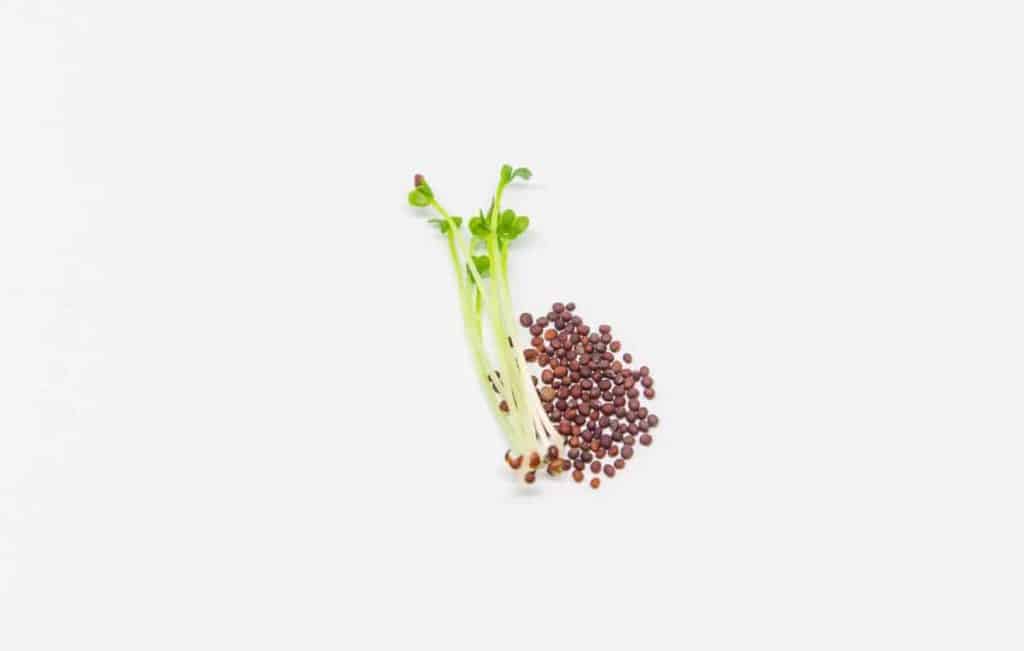
Credit: Yay Images
1: Arugula microgreens
Time to harvest: 5–14 days
With mild spicy notes and slightly nutty undertones, this Brassica is a favorite for its use as a salad green.
Note that this quick germinating seed is mucilaginous, which means it develops a gel-like sac around each seed when it comes in contact with water. And like many other Brassicas, this one sometimes develops root hairs which many confuse with mold.
2: Broccoli microgreens
Time to harvest: 5–14 days
Looking for a quick starter? Here’s another popular member of the Brassica family that’s packed with vitamins A, B, C, E, and K. It also contains calcium, iron, and is an excellent source of plant-based protein.
Sow broccoli seeds to grow tiny veggies with white stems and green leaves. This smaller version of broccoli has a mild spicy flavor.
One important trick when growing this microgreen is to remember to bottom water it for best results. A common problem many experience is having too much sitting water, which leads to root issues and bacterial or mold growth.
Check out how to use broccoli sprouts or micros in healthy juices and smoothies.
3: Cabbage (aka Napa cabbage or Chinese cabbage)
Time to harvest: 8–12 days
Napa cabbage microgreens (also known as Chinese cabbage) are one of the fastest growing varieties of cabbage. (Another variety, red cabbage microgreens, are slightly slower growing.)
With high germination rates, this is a great green to grow if you’re just starting out. This tiny seedling closely resembles its mature counterpart with pale green leaves and white stems.
This is a highly nutritious green with a mild and agreeable cabbage-y flavor. Use it as a salad green or mix with spicier varieties for more kick.
4: Corn shoots
Time to harvest: 7–12 days
If you love sweet corn-on-the-cob, you’ll want to try growing your own sweet corn shoots. It’s a tasty snack you can enjoy on its own.
Grown from seeds of the Zea mays everta plant (the same one that produces popcorn kernels) popcorn shoots are grown differently from other microgreens. While other micros require sun, you grow corn shoots best in blackout conditions.
Preventing sun exposure allows the shoots to remain sweet, and gives it a pale, yellow coloring.
5: Cress microgreens
Time to harvest: 5–14 days
While cress is a fast sprouter, it can be a bit trickier to grow. Curly cress is another mucilaginous seed that forms a gelatinous layer around each seed when wet. You’ll want to prevent overwatering, as this will slow down germination.
This is a flavor-packed micro with complex spicy notes. Use as a garnish or mix with milder greens. With beautiful tiny green leaves, this microgreen is as tasty as it is stunning.
6: Kale microgreens
Time to harvest: 5–14 days
While you can grow full-grown kale plants indoors, why not try growing this mild and sweet micro?
There are many varieties of kale to choose from, including green, Red Russian, or purple kale. The red or purple varieties have a lovely splash of color on the stems.
With a similar taste to the mature leaves, kale is great for beginners: easy germination and swift growing.
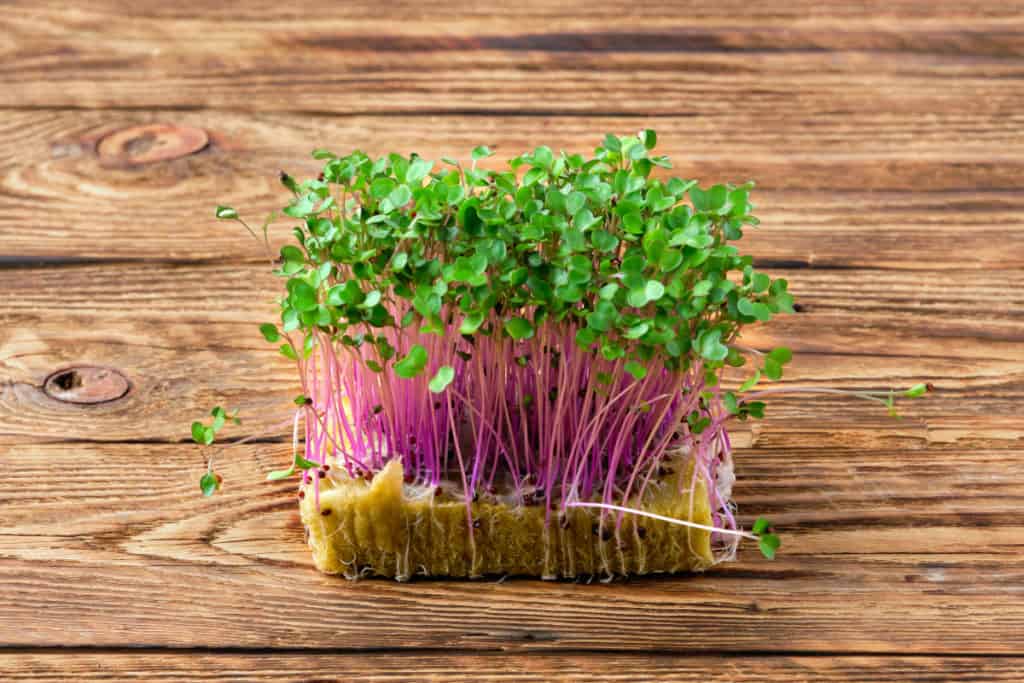
Credit: Deposit Photos
7: Kohlrabi
Time to harvest: 7–14 days
If you’re not familiar with kohlrabi, you’re not alone. Another Brassica, this unique veggie is also known as German turnip. The mature plant features long stalks that sprout from bulbs in varying colors: pale green, white, or purple.
A popular type of variety to grow is the purple kohlrabi microgreen. With a tender texture, it tastes like a cross between cabbage and broccoli with subtle sweet notes.
These tiny greens are packed with vitamin C. These seeds don’t require any soaking, just scatter the seeds evenly across your growing medium.
8: Mustard microgreens
Time to harvest: 7–8 days
Mustard greens are one of the best microgreens for beginners. These microgreens are easy to grow (it grows evenly and quickly).
Mustard also adds a bold and spicy flavor to any dish. If you love the taste of horseradish, then you’ll want to try your hand growing these mustard greens. Most people use this micro in small quantities as a garnish or as part of a salad mix.
Give your tiny plants plenty of sunshine and keep temperatures on the warmer side for healthy growth. Stock up on your vitamins A, C, E, and K along with a helping of protein and fiber.
9: Pea shoots
Time to harvest: 8–12 days
Pea shoots are a popular and fun veggie to grow as it’s one of the only microgreens where you can enjoy a second harvest. With high germination and an accelerated growth rate, you really can’t go wrong with this legume.
Many prefer to let this microgreen grow taller, which makes for a substantial-sized green. Fresh, crunchy, and sweet, you’ll love using pea shoots as a salad base, or mixing with sunflower micros.
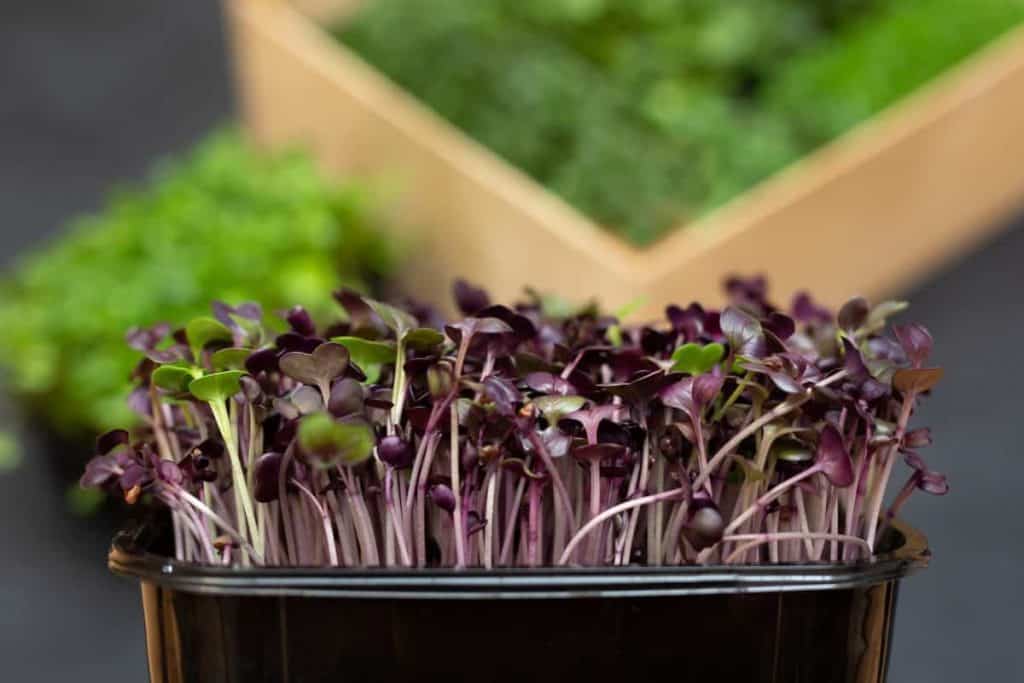
Credit: Yay Images
10: Radish microgreens
Time to harvest: 6–14 days
Looking for a peppery bite? Bring on the radish!
There are many types of radish varieties to grow. Red or purple radish and daikon radish are some of the most popular radish micros. The leaves on red radish add a lovely splash of color—it ranges from dark purple to crimson. Daikon radish has light green leaves with white stems.
Not only are radish micros packed with flavor, they’re also brimming with nutrients. A 2012 study shows that daikon radish microgreens have one of the highest levels of vitamin E.¹
11: Sunflower microgreens
Time to harvest: 8–12 days
Packed with plenty of vitamins and healthy omega-3s and omega-6s, the sunflower microgreen also contains all the essential amino acids.
These large shoots have a slightly nutty flavor and plenty of crunch, making the sunflower micro one of the most popular microgreens. These are great as a base green for salads.
Look for quality black oil sunflower seeds that are for sprouting for the best results. You’ll need to pre-sprout sunnies first as the seeds have a hard outer shell.
Give them plenty of sun.
12: Wheatgrass
Time to harvest: 6–10 days
While some might not consider wheatgrass as a microgreen, I felt it worthy of including on this list.
If you enjoy juicing or making your own healthy smoothies, wheatgrass makes a great addition to your daily diet. Fresh and intense, like a shot of fresh-mowed grass, wheatgrass offers plenty of amino acids, calcium, iron, and protein, and a slew of vitamins.
Soak the seeds first before broadcasting over your grow tray. Give your grass a trim just above the soil line when you’re ready to harvest. You can let wheatgrass grow longer than regular micros, anywhere from 4 inches (10 centimeters) or more.
What are some slower growing microgreens?
Some microgreens just require a bit more time. In the world of microgreens, “slow growing” microgreens are those that are ready to harvest between 14 and 28 days. (Which really isn’t that slow compared to regular mature crops!)
Herbs such as amaranth, basil, beet, carrot, cilantro, and thyme are slower growing.
👉 If you like this post, see our Complete Guide to Growing Microgreens at Home. 🌱
Would you like more timeless tips via email?
Fun tips to help you live an independent, self-sustaining lifestyle. Opt-out at any time.


References
- Lester, Gene & Xiao, Zhenlei & Luo, Yaguang & Wang, Qin. (2013). Microgreens: Assessment of Nutrient Concentrations. Journal of Agricultural and Food Chemistry. Accessed November 2022.

Author: Josh Tesolin
Josh is co-founder of RusticWise. When he’s not tinkering in the garden, or fixing something around the house, you can find him working on a vast array of random side projects.

